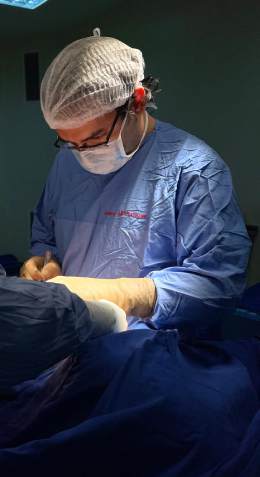Breast Reduction - Reduction Mammoplasty

Breast Reduction - Reduction Mammoplasty
What is Breast Reduction?
Breast reduction, also known as reduction mammoplasty, is a surgical procedure aimed at reducing the size and reshaping the breasts to alleviate physical discomfort and improve overall quality of life. It is sought after by individuals who experience symptoms related to large, heavy breasts, such as back, neck, and shoulder pain, as well as difficulty finding clothes that fit properly and skin irritation.
What does Breast Reduction Mean?
The term "breast reduction" is self-explanatory, referring to the reduction in breast size achieved through surgical techniques. During the procedure, excess breast tissue, fat, and skin are removed to create breasts that are smaller, lighter, and more proportionate to the rest of the body. The nipples and areolas may also be repositioned to achieve a more natural appearance.
Why People Choose Breast Reduction?
People choose breast reduction for various reasons, but the most common motivation is to alleviate physical discomfort and improve quality of life. Large, heavy breasts can cause chronic pain in the back, neck, and shoulders, as well as indentations from bra straps and skin irritation under the breasts. Additionally, women with disproportionately large breasts may experience difficulty participating in physical activities and may feel self-conscious about their appearance.
Is Breast Reduction a Long-term Solution?
Breast reduction is considered a long-term solution for individuals seeking relief from the physical and emotional burdens associated with large breasts. By removing excess breast tissue and reshaping the breasts, the procedure can provide lasting relief from symptoms and improve overall comfort and confidence. However, maintaining a stable weight and avoiding significant weight gain or pregnancy can help preserve the results over time.
After breast reduction surgery, patients should avoid strenuous activities, heavy lifting, and reaching overhead for several weeks to allow for proper healing. They should also follow their surgeon's instructions regarding wearing compression garments and caring for the incision sites to minimize the risk of complications and achieve optimal results.
Is Breast Reduction Operation Risky?
Like any surgical procedure, breast reduction carries risks and potential complications. These may include infection, bleeding, changes in nipple sensation, asymmetry, scarring, and difficulty breastfeeding. However, when performed by a skilled and experienced plastic surgeon, the risks are typically low, and the benefits often outweigh the potential drawbacks.
Ideal candidates for breast reduction are generally in good overall health, non-smokers, and have realistic expectations about the outcome of the procedure. They may be bothered by one or more of the following concerns:
1. Chronic pain in the back, neck, and shoulders due to the weight of large breasts.
2. Skin irritation, rashes, or indentations from bra straps.
3. Difficulty finding clothes that fit properly and participating in physical activities.
4. Emotional distress or self-consciousness related to breast size and appearance.
In conclusion, breast reduction is a surgical procedure aimed at reducing the size and reshaping the breasts to alleviate physical discomfort and improve overall quality of life. While it provides long-term relief from symptoms associated with large breasts, it's important for individuals considering the procedure to understand the potential risks and benefits and choose a qualified surgeon with experience in breast reduction surgery. Overall, breast reduction can be a life-changing procedure for those seeking relief from the physical and emotional burdens of excessively large breasts


